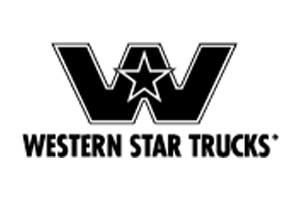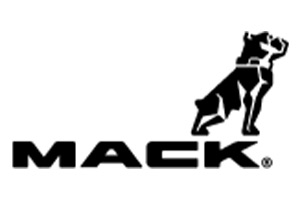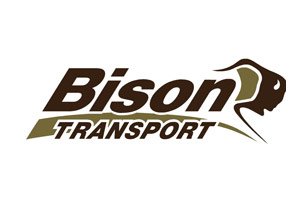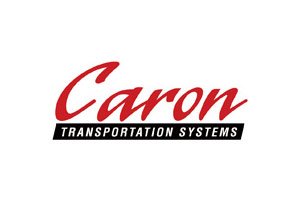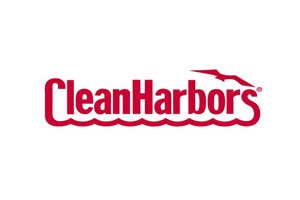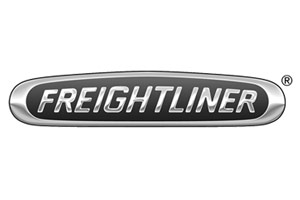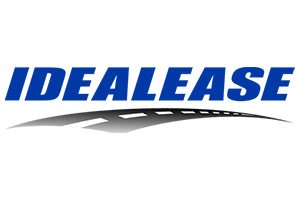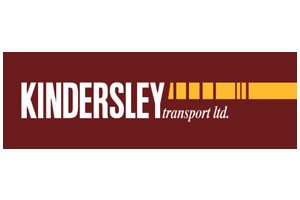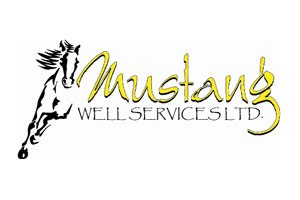Key Takeaways
-
Preventive action and recognizing truck repair signs early can help maximize vehicle efficiency, safety, and minimize the eventual cost of long-term repairs. Be alert to odd noises, changes in steering or ride, smoke color, fluid leaks, warning lights, increased fuel consumption, etc.
-
With proactive maintenance, you can stop expensive repairs from happening. Frequent inspections and catching problems early will increase the life of your truck and keep the roads safer.
-
Routine care and maintenance is the key to keeping a truck as productive and efficient as possible. These are things like oil changes, tire pressure monitoring system checks, brake system inspections, and battery service.
-
Find a trusted truck repair shop with quality mechanics and state-of-the-art diagnostics. This ensures consistent, quality repair and reduces your downtime.
-
Professional truck repair services offer expertise, accurate diagnostics, and reliable solutions, saving time and providing peace of mind compared to DIY repairs.
-
Develop friendly truck repair signage that is visible, weather resistant, and within the guidelines of your local road authority. Try incorporating digital features, such as QR codes or social media channels, to attract new customers and make your sign stand out.
Truck repair signs help identify reliable services for maintaining and fixing trucks, offering clear guidance for drivers in need of immediate support. Whether it’s a small decal on a window or a large billboard, these signs are designed to quickly communicate essential details like the type of repairs offered, operating hours, and contact information.
Truckers and fleet operators know they can get expert help, fast with these signs. This accomplishment not only decreases downtime, but ensures that vehicles are always operating at their best. These signs are prevalent particularly in high-traffic areas, such as truck stops, freight corridors and industrial areas.
These places are often in need of repeated repair and upkeep. In this guide, we’ll explore the key elements that make these signs effective and how they support truck drivers daily.
Why Truck Repair Signs Matter?

Truck repair signs signal these important establishments to ensure that vehicles stay efficient and businesses stay healthy. For owner operators, knowing these signs allows for faster response, preventing unnecessary downtime and repair costs while ensuring safety.
As trucks continue to act as the lifeblood of almost every industry, we have to address repair signs before they start because it’s more than cost-effective.
Recognize Urgent Repair Needs
Some truck repair signs are an emergency situation. Strange sounds, like squealing brakes and knocking transmissions, usually mean something much worse is wrong. In much the same way, dashboard warning lights or limp home mode indicate issues that need addressed right away.
Failure to heed these signs can result in unplanned breakdowns or costly delays — even catastrophic damage. Take something as simple as a brake problem, one of the top reasons for crashes and vehicle off-road time.
Providing a checklist to look for common urgent indicators, such as fluid leaks or tire wear, can allow truck owners to respond immediately to protect their assets. Providing 24/7 emergency services so technicians are ready to react in an emergency can slash downtime, maximizing productivity when it matters most.
Avoid Costly Future Breakdowns
That’s why early detection is key to saving money and avoiding damage while extending a truck’s lifespan. Conducting frequent inspections, particularly as seasons change, will help identify and resolve small problems before they become major hazards.
Tracking repair history helps identify recurring patterns, such as wear on specific parts, enabling proactive maintenance. With the incorporation of OEM parts whenever applicable, repairs are better suited to manufacturer standards and more likely to prevent costly and dangerous breakdowns.
With every hour they are off the road costing businesses $55 per hour, keeping up with prevention prevents businesses from incurring costly long-term expenses.
Maintain Driver and Road Safety
After all, we all know that safety is always the top priority. Truck repairs, when neglected, not only endanger drivers and fleets but everyone else who shares the road with them.
Federal regulations further underscore the importance of safety by mandating these trucks undergo thorough annual inspections. Fleet managers can create a culture of safety by making it easy to perform regular inspections and complete repairs quickly.
This proactive approach not only keeps the shop compliant but helps build trust with customers.
What Are Obvious Truck Repair Signs?
Identifying obvious signs of a truck repair need will help you avoid the cost of an expensive repair job and keep roadways safe. By keeping an eye out for these obvious truck repair signs, you can catch issues before they become major causes of a breakdown. It’s important to get to know some of the telltale warning signs.
Put together a visual guide to go back to as needed and ensure your truck is in perfect shape at all times.
1. Listen for Unusual Sounds
Mechanical problems typically reveal themselves with unusual sounds. Grinding is a sign that your brake pads might be worn down, while knocking noises might suggest an issue with your engine. Neglecting engine knocks is like neglecting a leaky kitchen faucet—small issue now, major disaster down the road.
Monitor for any increase in noise when operating and potentially save a record of sounds that are outside the norm. This history can be extremely useful for mechanics to diagnose the problem correctly. Making auditory checks a regular part of your maintenance routine will go a long way toward identifying issues before they become catastrophic.
2. Note Changes in Handling
Steering that feels less responsive or uneven ride height can signal suspension or alignment issues. Various types of excessive or abnormal tire wear and other signs can also indicate problems. For instance, edge wear can mean under-inflation, and scalloping can indicate a suspension issue.
Perform driveability/handling detection during pre/post inspection and repair these concerns right away to stay in control and safety.
3. Observe Exhaust Smoke Color
Exhaust smoke color is a simple way to detect engine health issues. Blue smoke can mean the oil is burning, and black smoke means there is a problem with the fuel. Keep a close watch and take note of any changing conditions.
Failure to heed these signs can result in catastrophic internal engine failure.
4. Check for Fluid Leaks
Checking for fluid leaks, including oil or coolant, underneath the truck is a must. The good news is that using absorbent pads makes detection easier and more straightforward. Acting quickly stops the issue from worsening and keeps your truck in good working condition.
5. Heed Warning Light Signals
Dashboard warning lights, even your truck’s ABS indicator, are an immediate alert that something is wrong. Get to know what each one means and have the manual available for easy on-the-road reference.
Getting these lights fixed right away prevents even worse problems from developing.
6. Monitor Fuel Consumption Rate
An unexplained drop in fuel efficiency can indicate an engine, fuel injector or fuel system issue. Whether tracking usage manually or through a fuel management system, programmatic oversight helps to catch anomalies.
Unexpected leaks and drops in performance should be looked at by a repair professional to avoid further damage.
How Does Early Detection Help?
Addressing truck problems before they arise is key to maximizing performance, safety, and minimizing costs. Catching small issues before they develop into bigger ones can save drivers time and money and improve the overall dependability of their vehicle.
Minimize Extensive Damage
Finding issues sooner won’t just make your truck run smoother — it’s crucial to avert major harm to key components such as the engine, transmission, or brakes. For example, having vibration or pull concerns highlighted in pre-inspection inspections can indicate that a vehicle has wheel alignment or brake pad wear problems.
Regular maintenance, such as oil changes every 8,000 to 12,000 kilometers or air filter replacements every 24,000 to 48,000 kilometers, is essential. Keeping a detailed service history helps track patterns and spot recurring problems, while modern diagnostic tools can uncover hidden issues quickly before they worsen.
Extend Truck's Operational Life
Reducing maintenance neglect is vital. Timely repairs help trucks age longer. After all, everything else banks on trucks being safe and on time. Following manufacturer care guidance, like checking belts and coolant levels frequently, will prevent early damage.
A cost-effective choice is to ensure that a safe and appropriately maintained vehicle can serve efficiently for decades, delaying the need for costly early replacements. Introduce a fleet maintenance program that identifies safety inspections and routine tire rotation schedules. Getting these done every 8,000-12,000 kilometers will keep you going strong.
Prioritizing durability is also important. Investing only in high-quality parts when making repairs will help them last over time.
Reduce Overall Repair Expenses
Taking care of minor problems before they escalate into larger repairs can greatly reduce maintenance costs. Repairing issues before they worsen, such as replacing worn brake pads instead of having to replace damaged rotors, increases the value of predictions significantly.
Preventive maintenance, such as routine inspections, minimizes failures on the road—which is critical for a semi-truck since each hour out of commission raises expenses. Setting a budget for regular maintenance provides a predictable source of funding and helps to prevent sudden, costly fixes.
Perform Regular Truck Inspections
Regular truck inspections are critical for overall maintenance and upkeep. They help keep you safe, minimize downtime, and increase your vehicle’s longevity. Following DOT standards and scheduling routine inspections in an organized fashion ensures your vehicle stays compliant and on the road.
Let’s dig into what inspections are and why they’re so important.
Identify Potential Issues Early
Identifying small, emerging issues before they worsen into expensive breakdowns is key to fleet maintenance and safety. For example, an under-inflated tire, when not properly monitored, can cause blowouts or wear in a lopsided manner.
It is important for drivers to proactively report unusual sounds, vibrations, or dashboard alerts found during inspections to flag a possible issue as early as possible. A well-organized inspection checklist can make this process much easier, ensuring all necessary safety features are checked such as the brake system, wheel fasteners and cargo securement.
For example, fasteners should be retorqued within 80-160 km of initial installation to verify reported torque. Moreover, using diagnostic tools like onboard sensors or telematics can help spot issues like engine faults or low fluid levels, offering a proactive approach to maintenance.
Adhere to Industry Standards
It’s important to follow industry standards such as the National Safety Code 11, Part B. Completing them not only helps with legal liability but operational efficiency.
Consistent review of protocols gets these everyday actions in line with these best practices and makes them safer. Personnel training staff on new regulations and best practices helps create a culture of accountability.
For instance, checking validation of inspection-certificate decals and doing follow-up re-inspection of cargo securement after certain intervals improves compliance.
Schedule Preventative Maintenance
Preventative maintenance helps prevent surprises like a truck breaking down unexpectedly or needing an expensive repair. Performing inspections every 10,000 miles, or according to the manufacturer’s recommendations, helps them stay trustworthy.
Working with a reputable repair organization to preventatively service these vehicles can ensure that regularity is built in. Setting reminders for daily checks, including brake systems and lighting, ensures uninterrupted operations.
What Maintenance Practices Should You Follow?
Vehicle maintenance is proven the best way to ensure your truck remains reliable, safe, and efficient. Proper maintenance practices not only minimize your truck’s downtime but improve its overall service life. Keeping it in the field longer saves you money in the process. Here’s a look at the maintenance practices every truck owner should be following.
Conduct Routine Oil Changes
It’s no coincidence that oil changes are the most common type of preventative maintenance performed. Staying on routine maintenance intervals recommended by the manufacturer will help keep oil properly lubricated. This practice minimizes engine wear. Using high-quality oil goes a long way in enhancing performance, particularly in cases of heavy loads or severe weather.
Neglecting oil changes can result in damaging sludge creation, which leads to costly repairs. Add oil filter replacements with every service to ensure a clean system.
Monitor Tire Pressure Regularly
Safety, handling, and fuel economy are all directly impacted by tire pressure. Tires that are not inflated to the proper pressure wear out quicker and are less fuel efficient. Check tire pressure with a gauge every week, and before taking any long trips.
Tire pressure monitoring systems (TPMS) provide real-time information for added convenience. Running the proper pressure results in even tread wear and improved tread life on long distance applications.
Inspect Brake System Components
Brake pads, rotors, and fluid levels should all be included in brake inspections. By documenting changes in brake performance over time, you can catch wear patterns early on. Avoiding brake maintenance increases accident potential and expensive restoration.
We recommend making brake system checks a weekly practice, more frequently for trucks that do a lot of miles.
Examine Hoses and Belts
Hoses and belts wear out after time and distance, creating points of catastrophic failure and imminent breakdown. Consistently inspecting and replacing parts will reduce the risk of overheating or power loss.
Make this step a part of pre- and post-trip inspections to identify wear before it becomes a trip hazard.
Evaluate Battery Condition
A dead battery can lead to serious delays. Check test voltage monthly and clean terminals to ensure strong starts. Don’t assume that new batteries are trouble-free.
Replace aging batteries proactively to avoid surprises.
How to Choose a Repair Service?
Selecting a repair service isn’t just about getting your truck fixed, it’s about protecting your investment and ensuring that your vehicle stays reliable while maximizing uptime. The right decision means your truck is in the hands of knowledgeable professionals who’ll help you avoid costly downtime and headaches down the road.
Here are key factors to consider:
Look for Skilled Mechanics
The quality of repair heavily depends on the experience and skill of mechanics. Certified technicians, such as those certified by the National Institute for Automotive Service Excellence (ASE), demonstrate their excellence. These professionals repeatedly demonstrate their superb skills and expertise in this field.
Repair shops with seasoned mechanics are fully aware of how to adapt their services. They accomplish this through deep collaboration with customers and knowledge of the specific demands of commercial trucks. Consulting friends or colleagues who own trucking businesses can help you find reliable experts.
Expert repairmen not only resolve the conflict but avoid situations in which problems keep happening, providing peace of mind value.
Ensure Advanced Diagnostics
Today’s trucks need increasingly accurate diagnostics and that makes more advanced and powerful tools a necessity. Repair shops that make the effort to stay up to date with new diagnostic technologies can properly identify issues quickly, saving time and money on unnecessary repairs.
When you have your consultation, inquire about their diagnostic process to make sure they follow effective procedures. Shops with access to specialized tooling and training can address more complex repairs more efficiently.
This development-focused edge is what distinguishes them in our competitive industry today.
Verify Quality Parts Usage
It’s pretty simple – you can’t have a reliable repair without using quality parts. Reputable shops will source high-quality, durable parts for your repair, and many offer warranties on their work—testaments of their confidence in quality.
Reviewing parts policies across repair shops shows the shop’s commitment to long-term solutions. Investing in superior parts upfront minimizes risks of breakdowns, ensuring peace of mind.
What Are the Benefits of Professional Service?
The benefits of professional truck repair vs. Do-it-yourself repairs are obvious, practical, and effective. DIY projects can seem cost-effective on the surface. However, with the help of professionals, you can be sure the job will be done right, saving you time and money in the long run.
With highly certified technicians, you get the expertise that comes with new, cutting-edge skills to ensure your truck stays in a safe and road-worthy condition. This specialist knowhow reduces the risk of rework and future mechanical failure. In return, drivers and fleet managers alike appreciate peace of mind.
Accurate Problem Identification
Safe, effective repair starts with safe, effective diagnostics. Trained professionals use sophisticated technology and extensive experience to identify problems accurately. This targeted level of expertise ensures that no detail is missed, lowering the chances of something going wrong again.
Getting started with the process of documenting your symptoms is an essential first step. Strange sounds, dashboard alerts, and shifts in behavior hold powerful clues to the mechanics. Additionally, because the root cause—not the symptoms—is treated with accurate diagnostics, future complications and costly surprises are avoided.
Reliable Repair Solutions
Dependable vehicle repairs help keep the nation’s fleet running strong. Professional service providers deliver customized solutions, making sure the repairs and maintenance go hand in hand with the needs of your truck. By talking through where repair lands from the start, everyone is clear about the potential final product and investment needed.
Not to mention, most well-established shops back their workmanship with a guarantee so you can take extra comfort in their dependability. This trustworthiness is directly applicable to fleet management. Research shows 90% of users gain greater reliability when they have all their services from a single provider.
Minimized Downtime
In the fast-paced trucking industry, time is everything. The purpose of professional service is to reduce vehicle downtime to the utmost. They allow for faster turnaround times to put trucks back on the road quickly.
Prioritizing off-peak hours for repair or mobile fleet maintenance, when applicable, creates convenience and minimizes disruptions. This kind of efficiency means increased operations with no interruption and greater overall fleet productivity.
How to Optimize Truck Repair Signage?
Your truck repair signage is an incredibly important messaging piece that helps create self-selection from the start with customers who are truly interested in connecting. Signs do more than just convey information, they persuade—their design, placement, and overall integration is important for any signage to be effective.
Here are some important tactics to make your truck repair signage work harder and smarter for you.
Design for Driver Attention
Drivers usually look at signs for five seconds or less, so clarity is key. Bright, contrasting colors such as red or yellow, paired with clear, bold fonts allow drivers to read signs at a glance. Including a graphic, like a repair wrench or a truck silhouette, is a great way to visually emphasize your message.
Bold, eye-catching graphics keep your shop visible above the surrounding competition, particularly in crowded areas or along major highways. For instance, a well-placed sign reading “Certified Semi-Truck Repairs” with a clear phone number can guide potential customers directly to your services.
Use Durable, Visible Materials
Outdoor signs are subject to abuse of the elements 24/7. Premium quality, weather-resistant options such as aluminum or acrylic provide lasting durability. Reflective finishes help visibility during dark hours.
Studies have found long-distance visibility to be the most effective at attracting attention. For instance, locating signs 100 meters from a major roadway makes them more visible by over 80%. Choosing high-quality, long-lasting materials saves on future maintenance expenses and helps maintain a cohesive brand look in the long run.
Follow Local Regulations
By ensuring compliance with local signage laws, you avoid potentially costly fines while building greater trust with the communities you serve. Review signage requirements in your jurisdiction or speak with local officials to verify size, location, and wording requirements.
For example, a regulation-compliant sign placed near a truck stop can seamlessly attract drivers without violating restrictions.
Integrate Digital Enhancements
Perhaps the greatest advantage of digital signage is the flexibility for dynamic messaging as customer needs change. QR codes can link to maintenance schedules, while social media handles encourage online engagement.
By implementing modern technology, you’re improving the overall convenience, but take your shop’s professional presence to another level.
Conclusion
Catching the warning signs of truck repair early on ensures that your rig stays in top shape and you don’t face more severe issues later on. Keeping up with routine maintenance and checks will save you time and money in the long run. Beyond supporting your bottom line, it helps your truck to be safer and more reliable on each job. Having a trusted repair service on hand brings added expertise and peace of mind when you need to address any issues.
By being proactive and partnering with experienced specialists, you not only safeguard your significant investment but ensure continuous operation with minimal disruption. Listening to repair signs and responding quickly truly goes a long way.
Join us for the next step to get your truck ready for anything. Whether it’s scheduling an inspection or finding the right service, small efforts now lead to big payoffs later.
Frequently Asked Questions
What are common signs your truck needs repair?
Typical signs can be anything from strange sounds, poor fuel mileage, dashboard lights, irregular tire wear, to hard steering. Taking care of these issues as soon as they arise saves damage to the truck and costly in-shop repairs.
Why is early detection of truck repair issues important?
Regular maintenance and early detection mean you can prevent costly repairs and downtime, and keep your truck operating at peak efficiency. It additionally keeps the roadway safe and prevents unnecessary surprise downtime.
How often should you inspect your truck for repair needs?
Check your truck features regularly, especially before extended travels or frequent use. Regular inspections every few weeks can catch developing problems before they become major repairs and keep equipment running at peak performance.
What are the benefits of hiring a professional truck repair service?
Professional services offer specialized expertise, warranties on quality repairs, and long-term peace of mind. They’re equipped with the right tools and parts for the job, getting your truck back on the road safely and efficiently.
How do you choose the best truck repair service?
Keep an eye out for shops with certified technicians, excellent customer feedback, upfront pricing information and fast turnaround times. A trustworthy repair shop puts the success of their business on the line every time they complete a job.
What maintenance practices help prevent truck repair needs?
Follow the manufacturer's maintenance schedule, check fluid levels, inspect tires, and replace worn parts promptly. Regular maintenance means lower risk of dangerous breakdowns and replacing your truck will come later.
Why are truck repair signs critical for fleet management?
By identifying repair signs early on, fleet managers can avoid expensive repairs, keep their equipment in operation with less downtime, and stay safer and compliant. It keeps trucks up and running, thriving and competitive.

